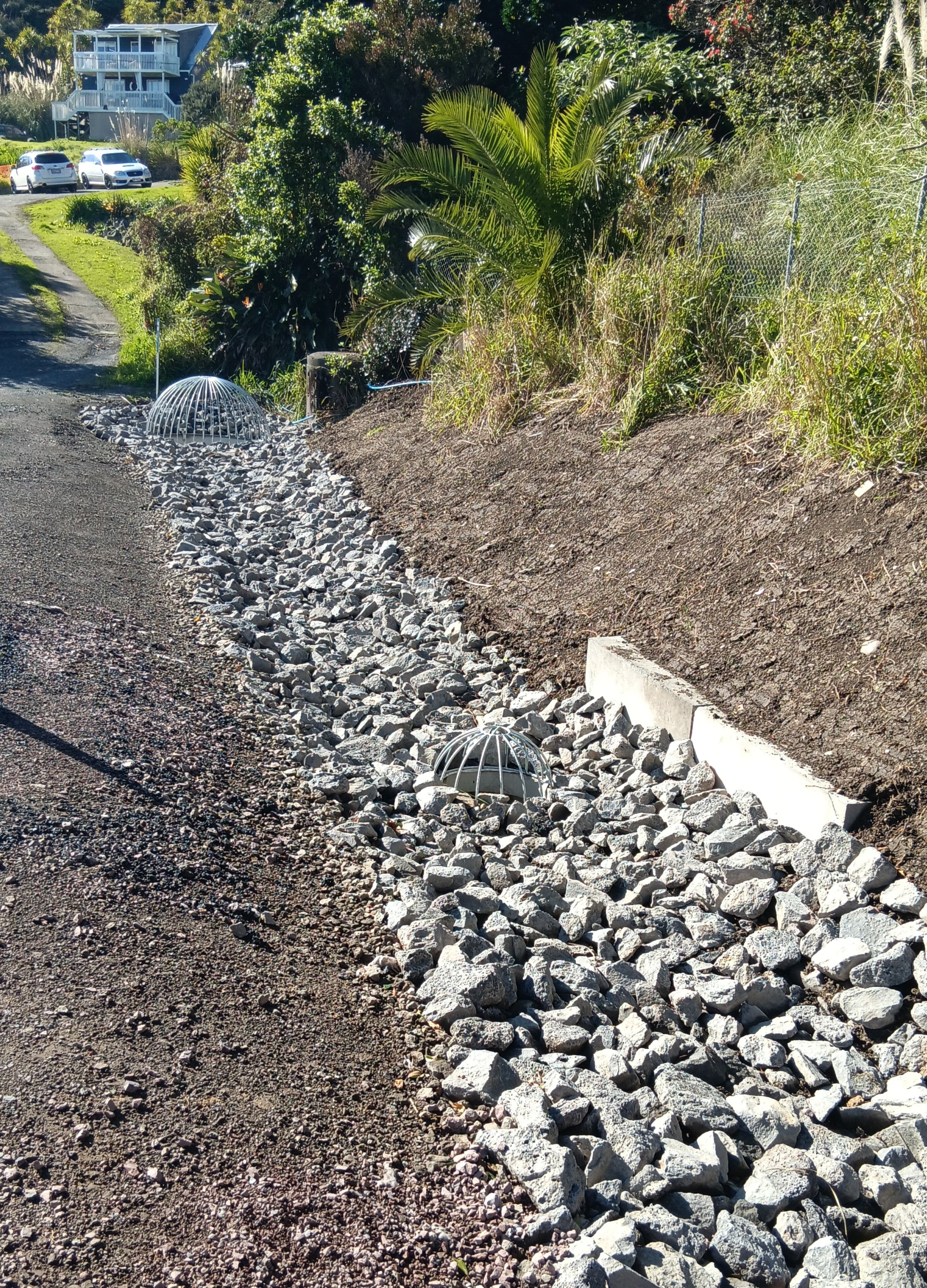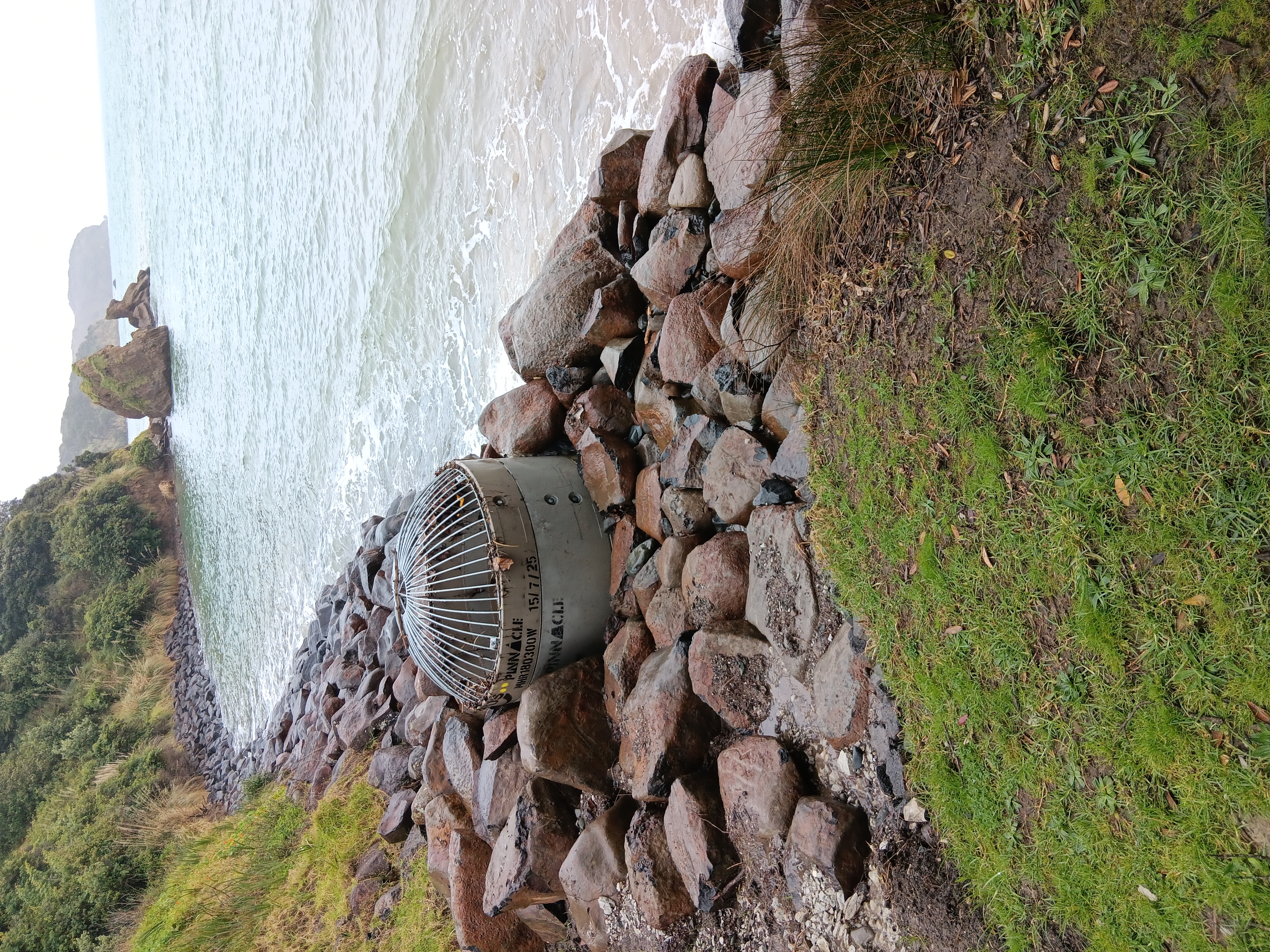New Ōmāpere stormwater system reduces foreshore erosion

A new stormwater system at Ōmāpere that will reduce foreshore erosion, increase capacity and filter storm sediment before it reaches the Hokianga Harbour has been completed.
The new system has been engineered to increase the amount of water it can carry during weather events and has improved inlet and outlet structures to better control water discharged into the harbour. The inlets are designed to reduce the amount of sediment and gravel picked up at the inflow points and the outlet is designed to slow water speed as it discharges, to spread outlet water over a larger area. These measures will reduce erosion and scouring on the foreshore at Ōmāpere and reduce sediment plumes that can occur during weather events.
Previously, stormwater and groundwater was captured in two culverts and piped under State Highway 12 before dispersing into a drain. During weather events, this drain was prone to scouring, which happens when fast-moving water removes sediment around a structure and can add to erosion issues.
The new system has reduced the depth of the drain along the edge of the east-bound lane of SH12. The visual impact of the concrete outlet structure was also reduced by lowering its location from the original design.
The cost of the project increased to $1.46 million after unknowable site issues caused delays to the project start and required modifications to the works and project scope. You can read about this here.
The project started at the end of April and took five months to complete.
Below - the outlet that slows stormwater speed and spreads it over a larger area to reduce erosion at Ōmāpere during weather events.
![]()

Tags: News story

